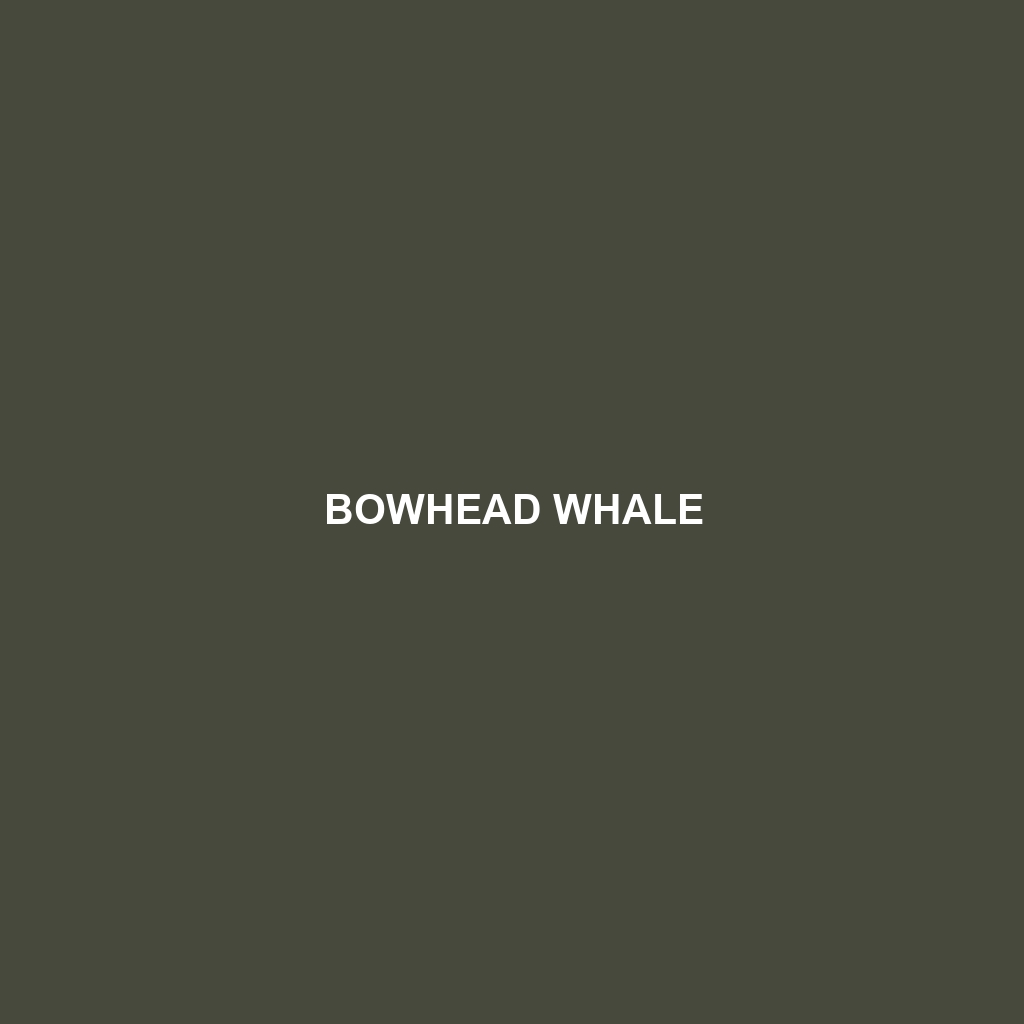Bowhead Whale (Balaena mysticetus) Species Description
Common Name: Bowhead Whale
Scientific Name: Balaena mysticetus
Habitat
The Bowhead Whale is primarily found in the Arctic and sub-Arctic regions. They inhabit the cold waters of the Bering Sea, the Chukchi Sea, and the Beaufort Sea, spending their time in areas of thick sea ice. These whales are known to migrate seasonally between feeding and breeding grounds, favoring shallow coastal areas in the summer months due to the abundance of food resources.
Physical Characteristics
Bowhead Whales are massive creatures, capable of reaching lengths up to 60 feet (18 meters) and weighing up to 100 tons. They possess a distinctive bow-shaped head, which is about one-third of their body length, and is covered in a layer of thick blubber. Their coloration varies, from dark black to mottled gray, and they have large baleen plates, which can be up to 14 feet long, used for filtering food from the water.
Behavior
Bowhead Whales are known for their slow, graceful swimming and often display curious behavior around vessels. They are primarily solitary but can be found in small groups, especially during migration and feeding. These whales are also recognized for their acrobatic displays, including breaching and lobtailing. Vocalizations include a series of low-frequency calls used for communication, particularly during the mating season.
Diet
The diet of the Bowhead Whale consists mainly of zooplankton, particularly copepods and amphipods. They use their baleen plates to strain large quantities of seawater, filtering out their food while swimming. Bowheads can consume up to 2 tons of food daily during feeding seasons, highlighting their crucial role in the marine food web.
Reproduction
Bowhead Whales have a long gestation period of approximately 13 to 14 months, typically giving birth to a single calf every 2 to 3 years. Calving usually occurs in the winter months in the warm waters near the ice front. Mothers nurse their calves for about 6 to 12 months, teaching them essential survival skills. Breeding behaviors are observed in the spring, with males competing for females through displays and vocalizations.
Conservation Status
The Bowhead Whale is classified as Least Concern by the IUCN Red List; however, it faces threats from climate change, habitat loss, and potential hunting pressures in certain regions. Conservation efforts are crucial to ensuring the population remains stable, especially as their Arctic habitat continues to undergo significant environmental changes.
Interesting Facts
- Bowhead Whales can live for over 200 years, making them one of the longest-lived mammals on Earth.
- They are known to possess the largest baleen plates of any whale species, which can reach lengths of 14 feet.
- These whales have a thick blubber layer that helps them survive in icy waters, measuring up to 1.5 feet in thickness.
Role in Ecosystem
The Bowhead Whale plays an essential role in the Arctic marine ecosystem. By feeding on zooplankton, they help to regulate the population of these organisms, which can impact the overall health of marine habitats. Additionally, their migratory patterns and interactions with other marine species contribute to the ecological balance of their environment.
